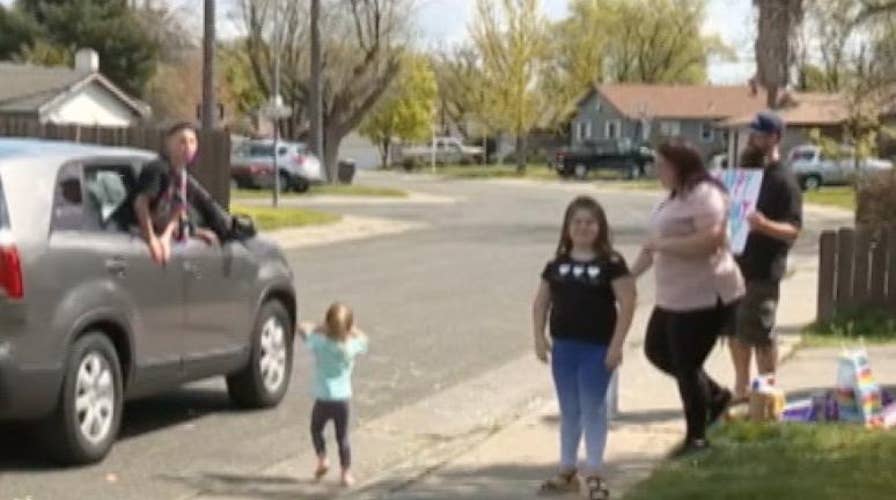Coronavirus pandemic changes how people around the world celebrate birthdays, anniversaries and holidays
People are finding new ways to connect and showing some milestones are too meaningful for even COVID-19 to stop; Alex Hogan reports.
Get all the latest news on coronavirus and more delivered daily to your inbox. Sign up here.
As hospitals scramble to obtain enough ventilators to treat coronavirus patients, a growing number of doctors are saying the machines may not be necessary for certain patients and, in some cases, could make their condition worse.
Their reasoning is based on multiple hospitals reporting unusually high death rates for coronavirus patients on ventilators, highlighting the fact that a definitive treatment for managing the virus that emerged only months ago may still be far off.

Healthcare workers assist a COVID-19 patient at a library that was turned into an intensive care unit (ICU) at Germans Trias i Pujol hospital in Badalona, Barcelona province, Spain. (AP)
Mechanical ventilators push oxygen into patients whose lungs are failing. Using the machines involves sedating a patient and sticking a tube into the throat.
Of the patients with severe respiratory distress who are placed on ventilators, about 40 to 50 percent them die, experts say. In New York City, the deaths of coronavirus patients placed on the machines are closer to 80 percent.
Higher-than-normal death rates have also been reported elsewhere in the U.S. and abroad. A report from the U.K. put the figure at 66 percent, while a very small study in Wuhan – the Chinese city where the disease first emerged – said 86 percent died.
The reason is still not clear. It may have to do with the patients’ health before they were infected. Or it could be related to how sick they had become by the time they were put on the machines, some experts said. But some health professionals have speculated that the ventilators may be making matters worse for some patients by igniting or worsening a harmful immune system reaction.
WHO DIRECTOR HITS BACK AT TRUMP THREAT TO DEFUND THE AGENCY
The high death rate has led some doctors to keep patients off ventilators for as long as possible and turn to other techniques instead.
Only a few weeks ago in New York City, coronavirus patients who came in quite sick were routinely placed on ventilators to keep them breathing. But physicians are increasingly trying other measures first.
"If we're able to make them better without intubating them, they are more likely to have a better outcome — we think," Habboushe said, adding that worries still persist of not having enough ventilators for those needing them.
There are widespread reports that coronavirus patients tend to be on ventilators much longer than other kinds of patients. Patients with bacterial pneumonia, for example, may be on a ventilator for no more than a day or two, while coronavirus patients have been on a ventilator for up to two weeks.
CLICK HERE TO GET THE FOX NEWS APP
COVID-19 is a member of the coronavirus family that can cause colds as well as more severe illnesses. Health officials say it spreads mainly from droplets when an infected person coughs or sneezes. There is no proven drug treatment or vaccine against it.
For most people, the virus causes mild or moderate symptoms that clear up in a few weeks. But roughly 20 percent — many of them older adults or people with other illnesses — can grow much sicker. They can have trouble breathing and suffer chest pain. Their lungs can become inflamed, causing a dangerous condition called acute respiratory distress syndrome.
The Associated Press contributed to this report.

